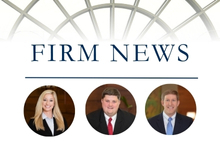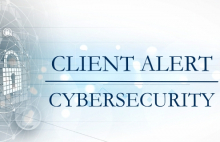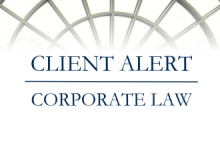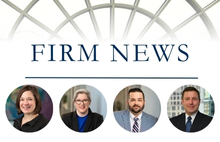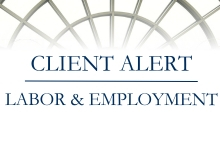OSHA’s New Guidance Regarding Indoor Mask Wearing, COVID-19 Vaccination Mandates, Regular Testing of Unvaccinated Workers, and More
August 24, 2021While employers continue to adapt to ever-changing circumstances in this pandemic environment, particularly given the surge of the Delta variant and amidst the national public health debate, OSHA recently published new guidance on mitigating and preventing the spread of COVID-19 in the workplace.
In reliance upon the CDC’s acknowledgment that fully vaccinated people may nevertheless be infected with the Delta variant and can spread it to others, OSHA is now expressly encouraging employers to adopt policies that require even fully vaccinated employees to wear masks in public indoor settings in “areas of substantial or high transmission,” a phrase defined by reference to a visual map of the United States on the CDC’s COVID Data Tracker website. Currently, every state is depicted as having areas of substantial or high transmission. In fact, the CDC’s map indicates that every county in Missouri, with the exception of Scotland County, is an area of high transmission. OSHA states that employers should provide face coverings to workers who request them at no cost, and with respect to employees who are deaf or hearing impaired, employers should consider providing masks with clear coverings over the mouth to facilitate lip-reading. OSHA also suggests that in public-facing workplaces like retail businesses, employers should “suggest or require” that unvaccinated customers, visitors, and guests wear face coverings while in public, indoor areas of substantial or high transmission.
OSHA further suggests that in addition to implementing physical distancing in all communal work areas, employers also limit the number of unvaccinated or otherwise at-risk workers in one place by permitting them to telework, work flexible hours, and deliver services remotely via phone, video, or web. In the event of fixed workstations where unvaccinated workers are not able to remain at least 6 feet apart from others, OSHA recommends that employers erect transparent shields or other solid barriers. Notably, however, OSHA is now recommending routine cleaning and disinfection guidance only in the event that a person suspected or confirmed to have COVID-19 has been in the workplace within 24 hours.
Perhaps the most significant aspect of OSHA’s new guidance is its rather express endorsement of employer-mandated COVID-19 vaccinations. For the declared purpose of helping employers protect unvaccinated workers and others who are not fully vaccinated, OSHA now directly suggests that employers adopt policies requiring workers to get vaccinated or undergo regular COVID-19 testing, in addition to requiring them to wear masks indoors and maintain physical distancing. Although OSHA expressly states that its new guidance is not a standard or regulation and does not create any new legal obligations, this pronouncement is the closest that any federal agency has come to directing employers to adopt mandatory COVID-19 vaccination policies, since the EEOC first announced on December 16, 2020 that federal equal employment laws do not prevent employers from requiring all employees who physically enter the workplace to be vaccinated (subject to disability and religious-based accommodations).
This shift in agency guidance may spur more employers to implement mandatory policies, particularly given the prevalence of the Delta variant and the FDA’s now full approval of the Pfizer vaccine (and likely imminent approval of the Moderna vaccine). And implementation of such policies, in turn, may well spur employee legal challenges to such policies on myriad grounds, though such challenges have largely been unsuccessful thus far in the courts. That said, employers may now be more inclined to choose to determine that following guidance from OSHA and CDC is the best available way to comply with the employer’s standard of care during these continuing uncertain times, as many have done since the beginning of the pandemic, particularly if they wish to try to complete a return to “normalcy”.
Given that the CDC estimates that the Delta variant accounts for 98.8% of all U.S. COVID-19 cases in the last two weeks and that it is reporting that only 51.3% of the United States population (approximately 170.4 million) have yet been fully vaccinated,1 these issues are not likely to dissipate any time soon, and many employers will necessarily be required to continue to make judgment calls and course corrections for the foreseeable future.
If you need any assistance with your COVID-19 related policies and practices or have questions about any COVID-19 related issues affecting your workplace, please contact one of the authors of this alert or another member of the Lewis Rice Labor and Employment Group.
1 https://covid.cdc.gov/covid-data-tracker/#vaccinations_vacc-total-admin-rate-total (Updated August 22, 2021).


